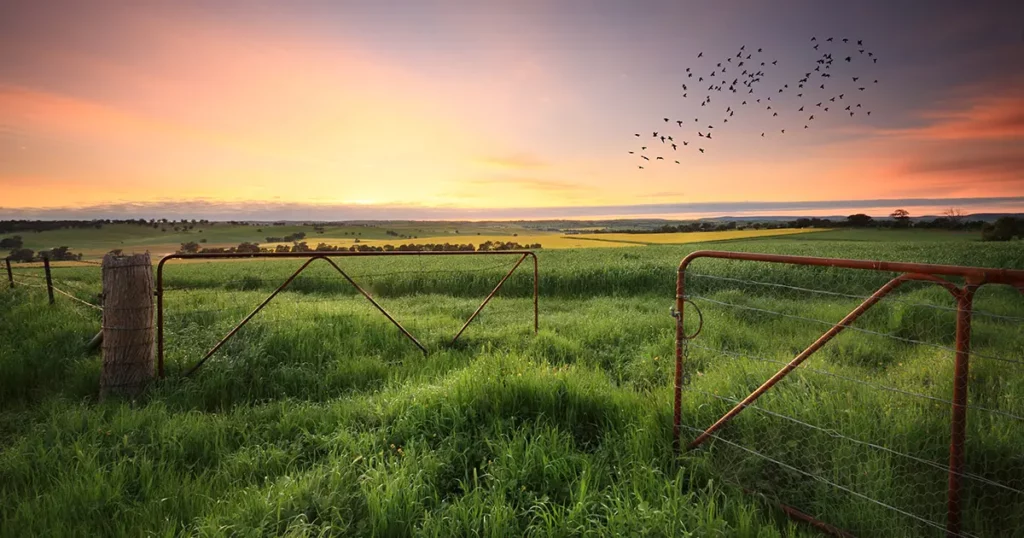Land values in agricultural fields averaged around $4,080 per acre in 2023. This was about a $280 increase per acre from the previous year and ranged from something as affordable as a tract of land in New Mexico valued at $610 per acre to living the high life in Rhode Island at $18,300.
For decades, real estate investors have sought out valuable land to diversify their portfolios. Not only does owning land offer a sense of security and reliable performance, but it remains a “fixed commodity” given how much the population is increasing, and the need for housing, manufacturing, business development, and clean green spaces is only getting stronger.
As we reflect on how land real estate has profited many an entrepreneur, let’s look closer at what you can expect given the current 2024 market predictions.
What is Affecting Land Values?
Before looking at trends, we need to consider the current real estate investing environment. While owning land is certainly easier than developing a new rental unit or finally deciding on the perfect residence for your family, it isn’t without some challenges.
Interest rates set by the Fed are sitting steady at 5.25%. They’ve been in that general range since July of 2023. However, inflation and hikes have pushed mortgage rates up to a 20-year high. You can now expect a rate well over 7.5% or higher, which impacts the cost of investing and asset management.
The housing market, in general, is shifting as well. Rising prices are causing younger investors to look at land for tiny home expansion, RV parks, or even tent living until they can raise funds or wait long enough for prices to return to an “achievable” level. The more this land is bought up, the higher costs will be driven across the board.
This demand is changing agricultural land inventories. Unless you live in California, the supply does not meet the current demand. Add on top of that the insecurity over the current outcome of the Farm Bill until early Q4 or late Q3 and natural resources drying up in areas where there is water access, and you have a potent mix for availability.
The best thing to do right now is find land that is either a tax incentive, a future location for developing a business (especially in agriculture or manufacturing), or holding so you can achieve tax and government incentives.
Trends in Land Real Estate Investing
Land Still Considered a “Safe” Play
Owning land is a safe investment. The global economy is getting better, and it is finally recovering from the pandemic and current unrest in Ukraine. As local USA economic numbers are positive, investors are looking to land as an investment opportunity to stabilize portfolios given the upcoming 2024 presidential election and the way that can shift asset valuations outside of land.
Hedging Against Inflation
Land will continue to be a positive real estate investment, given the risk of inflation. Everything from the cost of rent to a gallon of milk is getting more expensive. Land is one of those assets that holds its physical value through time, especially when it is in finite supply. Incorporating land into your current portfolio lowers your risk during an economic downturn.
Diversity of Use
With the spread of information through massive social media platforms like YouTube and TikTok, more and more developers are finding new and unique ways to leverage the use of the land they own. From creating new agribusinesses inside a mixed sector with tourism, education, and farming to opening land use for carbon offsets, we are going to continue seeing innovative and diverse uses of this asset.
Fractional Ownership
Blockchain and complementary technologies are pushing partial land ownership. Investors just getting into this sector can risk lower amounts of money to dip their toes in the pool before committing larger cash assets. For example, using a micro-investing platform to develop regenerative agriculture is a trending concept among younger investors with little to no experience in the land ownership market.
Increasing Cash Rents
While the market may cool over 2024 to a more balanced increase aligned with inflation, cash rent auctions should still increase. Many of these markets are being sold in 3-year packages, lending some surety to renters wanting more stability. That should help the land market remain stable even when commodity prices fluctuate.
Wrapping Up
It is important to remember that our working society has shifted. The availability of hybrid or remote working is opening up land values in more rural and rustic areas of the country. The more flexibility workers have to purchase land, homes, or other assets in rural communities, where prices are traditionally lower than in urban environments, the higher the land valuations will continue to grow.
Purchasing now is a valid land real estate market strategy. The asset’s stability is there, the interest rates are likely to grow, and the threat of inflation or a change in leadership is real. Owning a solid asset with one of the most stable outlooks ensures your portfolio’s resistance to future market changes.

